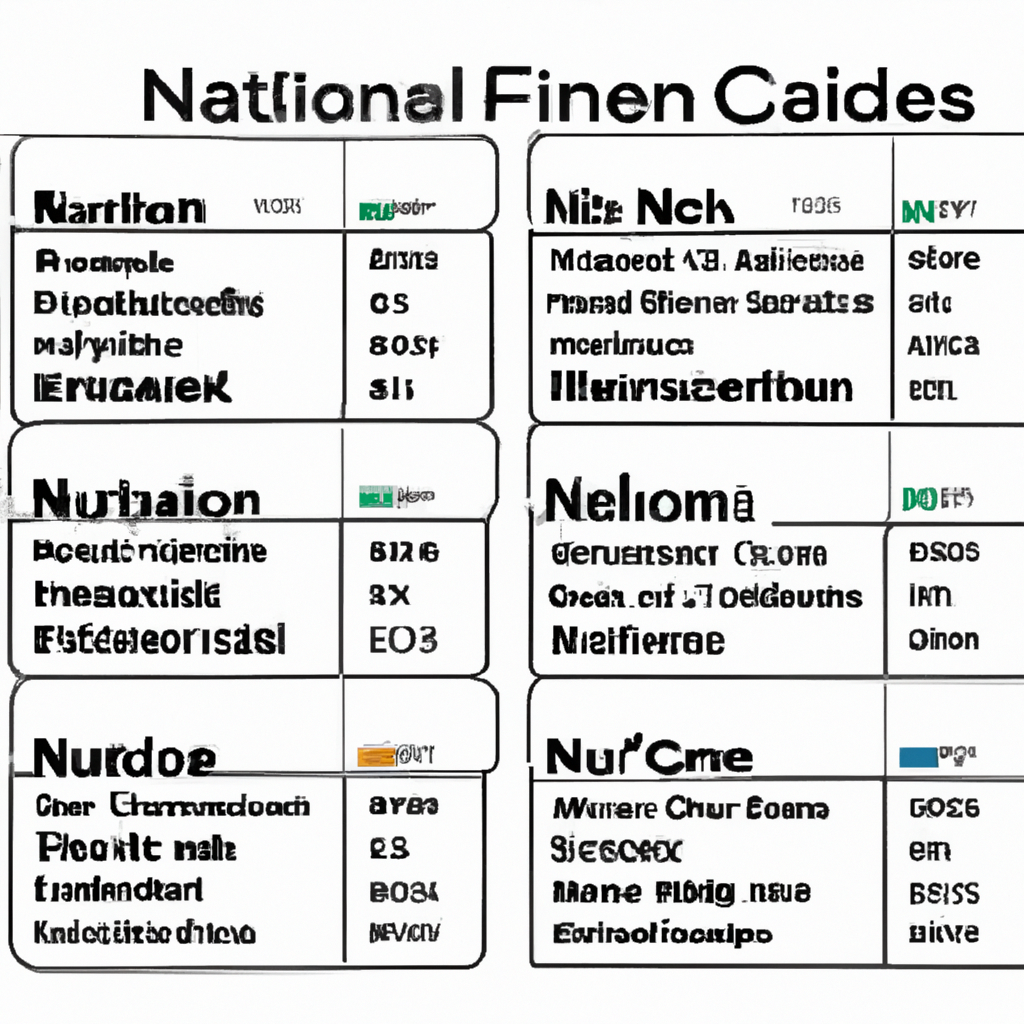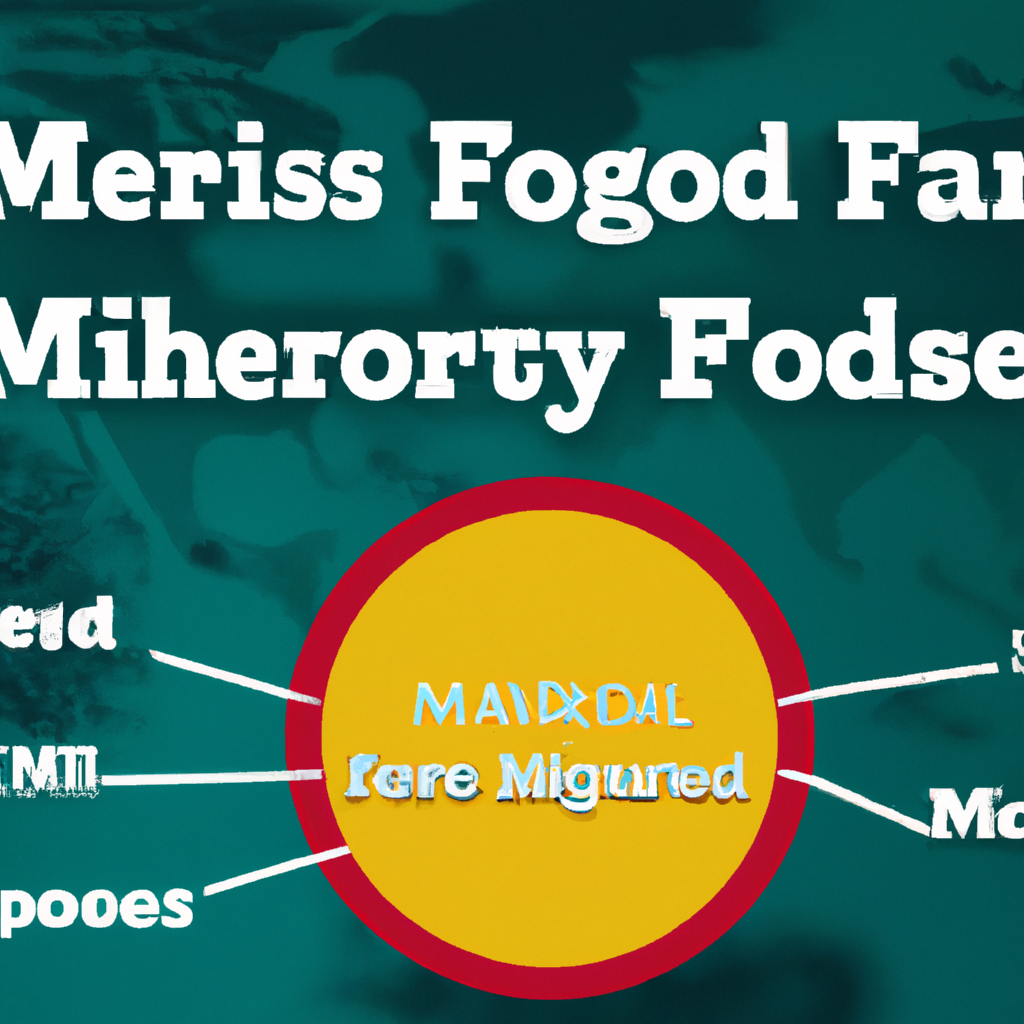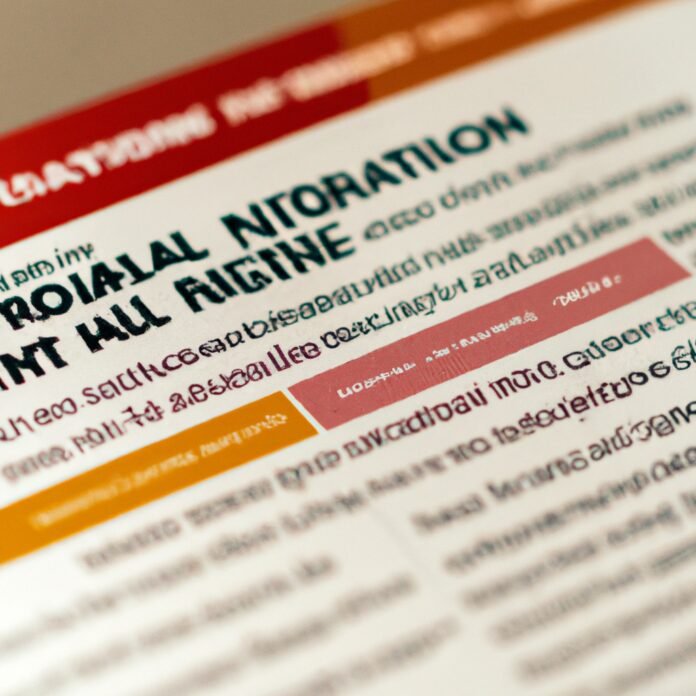Navigating the nutritional information on food labels can be tricky. With a turbulent landscape of obscure symbols, strange lingo, and dizzyingly long lists, many shoppers feel overwhelmed. Yet, understanding North American food labels is key: what’s more important than knowing exactly what’s in the food you’re eating? Take the mystery out of food label navigation with this article, as we decode the nutritional information cluttered on labels to help you make more informed food choices!
1. Unravelling the Mysteries of North American Food Labels
Navigating the food labels in North America can feel like a daunting task. All the terms and nutritional information can make it hard to tell what’s actually healthy and what’s not. To give you an upper hand when shopping north of the border, here are some key labels to look out for:
Organic: Goods labeled as organic must meet the standards set by the United States Department of Agriculture (USDA). This means that products claiming to be organic are free of synthetic chemicals from fertilizers, pesticides, and other made-created substances.
Non-GMO: The Non-GMO label indicates that a product is free from genetically modified organisms (GMOs). Some foods, like soybeans and corn, are genetically altered to withstand certain herbicides, and the Non-GMO claim ensures that those products are in their natural form.
Cruelty-Free: This label guarantees that the product or the ingredients used in the product are not tested on animals.
Free-Range: For animal products, free-range indicates that the animals were raised in a humane environment that provides them access to the outdoors.
Gluten-Free: This is indicated for products that do not contain any wheat, barley, or rye, and those who have an intolerance to gluten may want to look for this label.
- Stick to organic goods as much as possible for optimal nutritional benefits.
- Opt for non-GMO when grocery shopping.
- Look out for the cruelty-free label to be sure you’re purchasing products not tested on animals.
- If you’re buying animal products, make sure they’re free-range, for an added sense of comfort.
- Gluten-free products are available if you need to avoid gluten in your diet.
The food industry is an ever-evolving space, so don’t be afraid to ask questions or to do further research. Your health and wellness should always come first, so make sure you’re using the labels to your advantage and making educated decisions on what you’re putting in your body.
2. Exploring the Decoding Process Behind Nutritional Information
Decoding nutritional information can sometimes feel like trying to crack a code – but not necessarily the kind that belongs in a fashionable spy thriller. The kind we’re talking about here is the kind which is printed on labels for processed food. It can be baffling for the novice, but there is actually a method to the madness.
Firstly, it’s important to take note of the serving size. This is often listed just after the number of calories at the top of the nutritional label. This figure determines what the other information on the label refers to. Say one package of a food item contains two servings, the breakdown for sugars, sodium, etc. would refer to per-serving amounts, not the entire package.
Next is to locate the % daily value. This is based on the recommended dietary intakes for the average person over the course of a day. Fast facts for the various nutrients are usually listed next and should be regarded with a minor grain of salt. Generally dissent values are based on a 2000 calorie diet – an amountconstitutes the daily intake of most of us. Pay attention, as there are usually significant differences for those aiming to lose or gain weight.
Now it’s time to look at the macronutrients: proteins, carbs, and fats. Most processed food labels break them down further into saturated, polyunsaturated, monounsaturated, and trans fats. These terms can help you gauge the overall healthfulness of a product. For overall health, it’s recommended to replace the fat percentage of saturated fats with unsaturated fats and ideally, trans fats should be negligible to nonexistent in your diet.
Finally there are the ingredients. This is very important as they are listed in order of volume, the first two or three being the most abundant. Checking this list will give you an immediate glimpse into the make-up of the food item. It’s also strongly advisable to check for added colours, sugars, and flavouring as these may be contributing to the overall nutritional & caloric value of the item.
- Serving sizes – Percentage of caloric intake as well as other values refer to this amount.
- Daily values – They are based on a 2000 calorie diet, take note of the given values and tailor your intake accordingly.
- Macronutrient breakdown – Crucial information to keep track of; saturated fats should be replaced with unsaturated fats and trans fats should be minimized.
- Ingredients – The first few ingredients will be the most abundant in volume; also check for any added colours, sugars, and flavouring.
Armed with these tools you’ll be able to decipher nutritional information like a pro. Once you’re familiar with them you’ll be able to quickly judge the nutritional value of food products to make more informed decisions when grocery shopping.
3. Uncovering the Pros and Cons of Labelling Standards
When discussing the pros and cons of labelling standards, it must first be established that labels are everywhere. From our food packaging and beauty products to our online purchases, the symbol of quality or quantity of product is evident. In the world of food and beverage, labelling standards help define and shape the industry in a way that is beneficial to all stakeholders.
Pros:
- Labeling standards ensure consistency in products, allowing for accurate measures across the entire sector.
- Labels are an effective way of communicating health, safety, and environmental information to consumers.
- Labelling standards help protect consumers against fraudulent, defective, or substandard products.
Cons:
- Labeling regulations can be costly for companies, as they often mandate the use of specific materials and technologies.
- There is often an issue with a lack of standardization of labeling regulations across countries.
- Not all labeling standards are implemented or enforced properly, which can lead to mislabeling and violations.
Ultimately, when it comes to labelling standards, it is important to understand the various pros and cons and to weigh them in the context of the particular situation. Labelling standards are a necessary part of any food and beverage industry, but they must be taken seriously and properly enforced in order for them to be beneficial.
In the end, having a comprehensive and unified system of labelling standards offers the food and beverage industry a distinct advantage in terms of product quality, regulatory compliance, and consumer safety. When implemented correctly, these standards can provide an invaluable resource for food and beverage companies, and help protect consumers from substandard products.
4. Understanding the Benefits of Reading Food Labels
Reading the food labels on the back of packages is an essential part of understanding what’s in the food you are buying and the benefits they can provide. There are key elements you need to focus on when looking at food labels to make sure that you are making the right choices and getting the most out of the nutrition you are consuming.
- Percent Daily Values: This lets you know what the percent of daily values of essential nutrients that the food contains.
- Ingredients: You should always read what the ingredients of the food are. Sometimes there may be added sweeteners or flavorings which can be unhealthy. Check to be sure that you’re getting the right mix of nutrient elements.
It’s important to note that the Percent Daily Values are based on a 2000 calorie diet. Thus, if you are looking to maintain or gain a specific amount of nutritional intake, the daily values may not be the best indication for you and it may be best to find a specialist to find out more about your dietary needs.
Remember that it is also important to look at the serving size. Some items may be high in calories, fiber, or fat, but those values are only based on a single serving. This is key because it tells you how much you would need to eat of a certain product for the nutritional values to reflect what is stated on the package.
Reading the food labels can provide us with the essential knowledge necessary for understanding what we are eating, the nutritional value it provides, and how it can affect our daily diet. Knowing how to read food labels is essential for maintaining a healthy and balanced diet.
Despite the complexity of the food labels, it is necessary to understand further the importance of label reading. Making wise, healthy decisions involves understanding the components behind the “Nutrition Facts”. While there is still more to learn, taking on the task of decoding the label is an invaluable step to promoting a healthier lifestyle.

